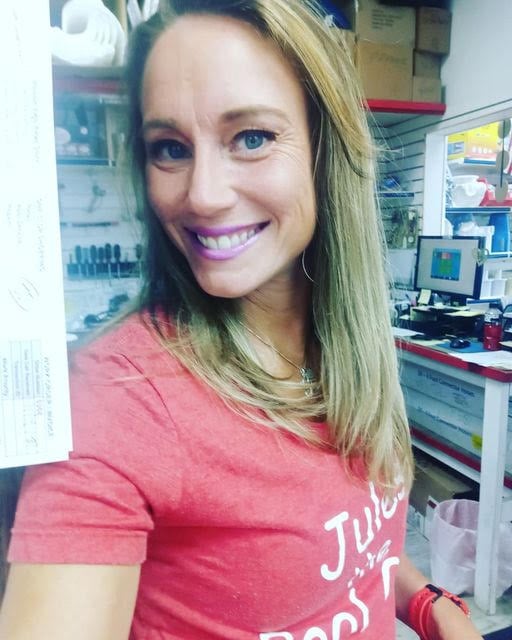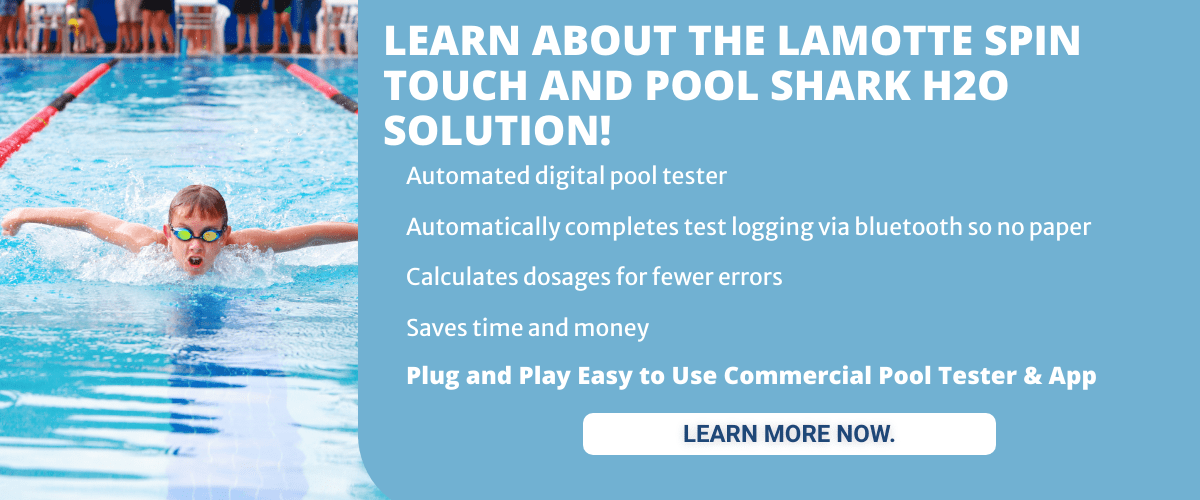Pool conditioner. Stabilizer. Two common names for the chemical Cyanuric Acid. Most of us use it unless we live in a State where it is actually illegal to use CYA on commercial bodies of water. I know, right? My mind was blown too. Cyanuric acid is designed for outdoor chlorine or salt pools.

What is Cyanuric Acid?
The formula for cyanuric acid is (CNOH)3. It can come in a liquid or granular form. It is odorless and easy to use.. Please always read and follow any product’s directions before handling a chemical. I just learned that cyanuric acid has been shown to cause cancer and lead to child development issues in pregnant women. Always wear the proper PPE (Personal Protective Equipment) when handling this and any chemical.
Cyanuric acid is like a sunscreen in your swimming pool. It helps protect the sanitizer from UV light on your chlorine. Chlorine added without cyanuric acid present will burn off in a matter of hours! It has been shown that after just one hour of UV exposure, chlorine could degrade as much as 50%! Using cyanuric acid will significantly lower your chlorine loss, thus saving you money. More is not better so keep reading to find out how much you need!
Types of Cyanuric Acid (Pool Conditioner Stabilizer)
You can get cyanuric acid in many forms, It comes in granular. The granular product can be mixed in a bucket and turned into a slurry before adding it slowly to the skimmer of the pool. It can also be put directly into the skimmer a little bit at a time! We don’t want to clog our lines. The pool conditioner stabilizer will dissolve in your pool’s filter. Granular pool conditioner stabilizer takes 5-7 days to fully take effect so you’ll have to be diligent about adding chlorine until it fully dissolves and does its job.
Pool conditioner stabilizer also comes in an “instant” liquid form. This is super easy to use. Just put the desired amount into the pool skimmer and 24 hours of pump run time later, you will have a cyanuric acid reserve.
There are also products that contain pool conditioner stabilizer. Dichlor, which is a 55% stabilized chlorine, contains stabilizer. Swimming pool tablets, Dichlor or Trichlor, also are stabilized, which means they contain cyanuric acid. We never want to use a stabilized chlorine shock if we are using tablets. This will raise your pool conditioner stabilizer to high, too fast. If using tablets, opt for liquid chlorine or calcium hypochlorite instead.
Where Should My Cyanuric Acid Levels Be?
For traditionally chlorinated swimming pools the recommended range is around 30 ppm. This is a good starting point because it is not only the minimum required to see results from your pool conditioner, but allows you some “room to grow” your CYA levels from tablet use. If we are treating a pool with a salt system to sanitize, the starting levels should be between 40-50 ppm. Why is the starting level higher in salt pools? Because you are not getting that weekly addition from your tablets because you aren’t using tablets.
Downsides of Cyanuric Acid (Pool Conditioner Stabilizer)
Cyanuric acid NEVER leaves your pool. You will lose some from splash out, but it does not evaporate like some other chemicals. The only way to reduce cyanuric acid is to drain and refill the pool water. Too much cyanuric acid, which would be over 100 ppm, renders the chlorine less effective. If you have a conditioner level of over 100 ppm, you need to keep your chlorine higher because the chlorine is less effective. Like a 7 ppm of chlorine with high pool CYA levels. (Side Note: The state of Florida is looking at making a chlorine level of 4 ppm the maximum level for swimming pools so keep a clos eye on your CYA Florida)
The best way to keep an eye on your cyanuric acid levels is to test the water often. If you have the LaMotte Spin Lab, you can get discs that have a field for cyanuric acid. The LaMotte spin lab is easy to use and sends your results to your Pool SHark H2O App in just 60 seconds. The Pool Shark H2O app also works with manual water testing. The app is designed to use the Langelier Saturation Index, which takes CYA into account before providing accurate dosing instructions for your bodies of water. The app also keeps digital logs and is health department compliant, so you can toss out your old fashioned paper log books.
So, in a nutshell, appropriate levels of cyanuric acid are beneficial. Too low or too high of a level can cause problems. Make sure you test often. See you poolside!
More Commercial Pool Chemistry Resources
Free, vs Combined vs Total Chlorine - A Guide for Commercial or Public Pool Operators
Chlorine Shock vs Non-Chlorine Swimming Pool Shock
Why Being Able to Calculate the Volume of a Commercial or Public Swimming Pool is Important
Cyanuric Acid Levels in Swimming Pools
Ideal Alkalinity in Commercial Pools
Managing pH and Alkalinity in Pools
Commercial Pool Chlorine Management
Cyanuric Acid in Your Pool Too High? How to Remove Cyanuric Acid (Lower Pool Stabilizer)
Lowering Alkalinity in Swimming Pools
Reasons Your Public or Commercial Pool Water Could Be Cloudy
Muriatic Acid in Swimming Pools
How to Lower pH in Pools, Water Parks and Water Features
Does Chlorine Kill Poop in a Swimming Pool?
Total Dissolved Solids: When Should I Drain My Pool?
Why Pool Chemical Storage Cabinets are Important for Commercial Pools
Storing Pool Chemicals: What Commercial Pool Operators Need to Know



